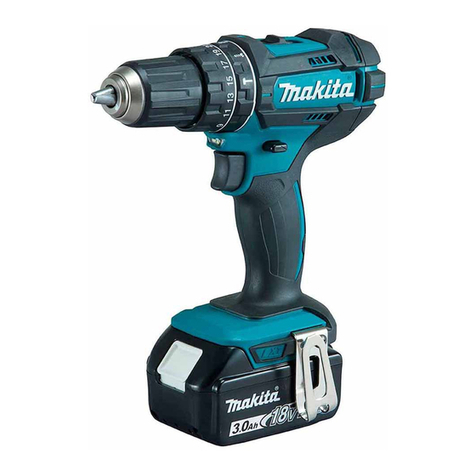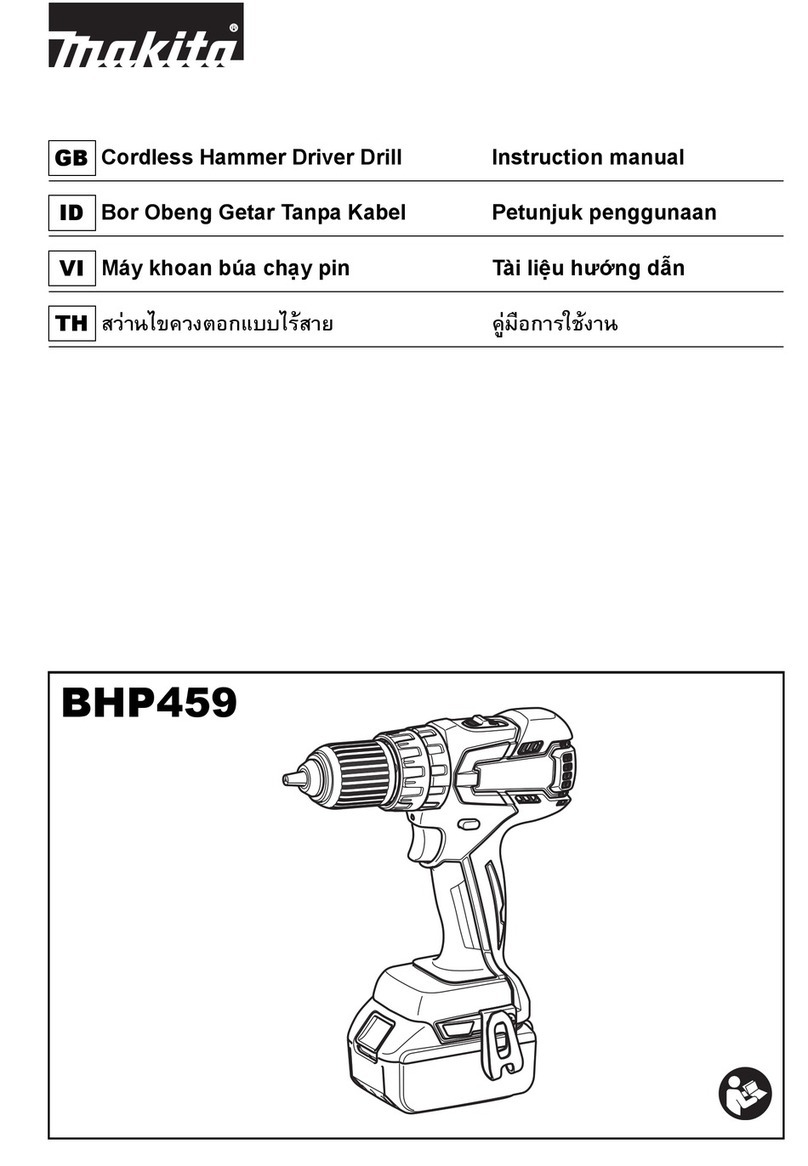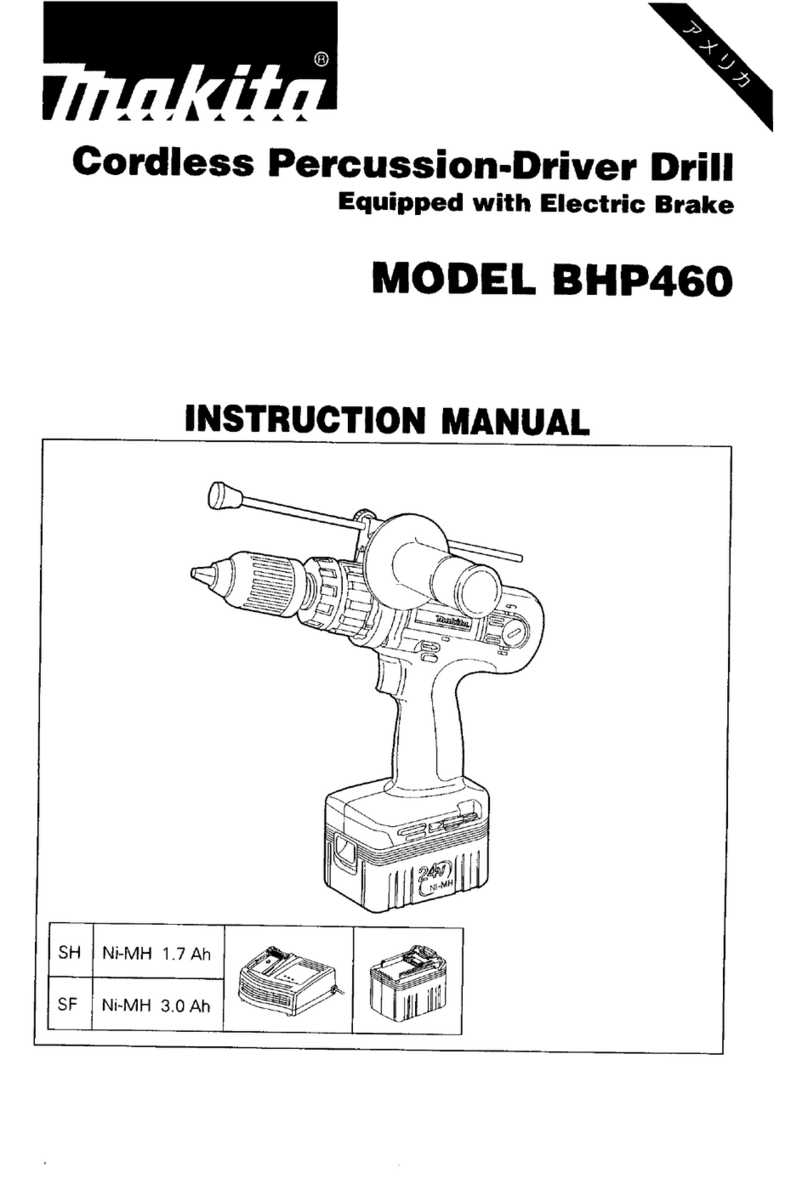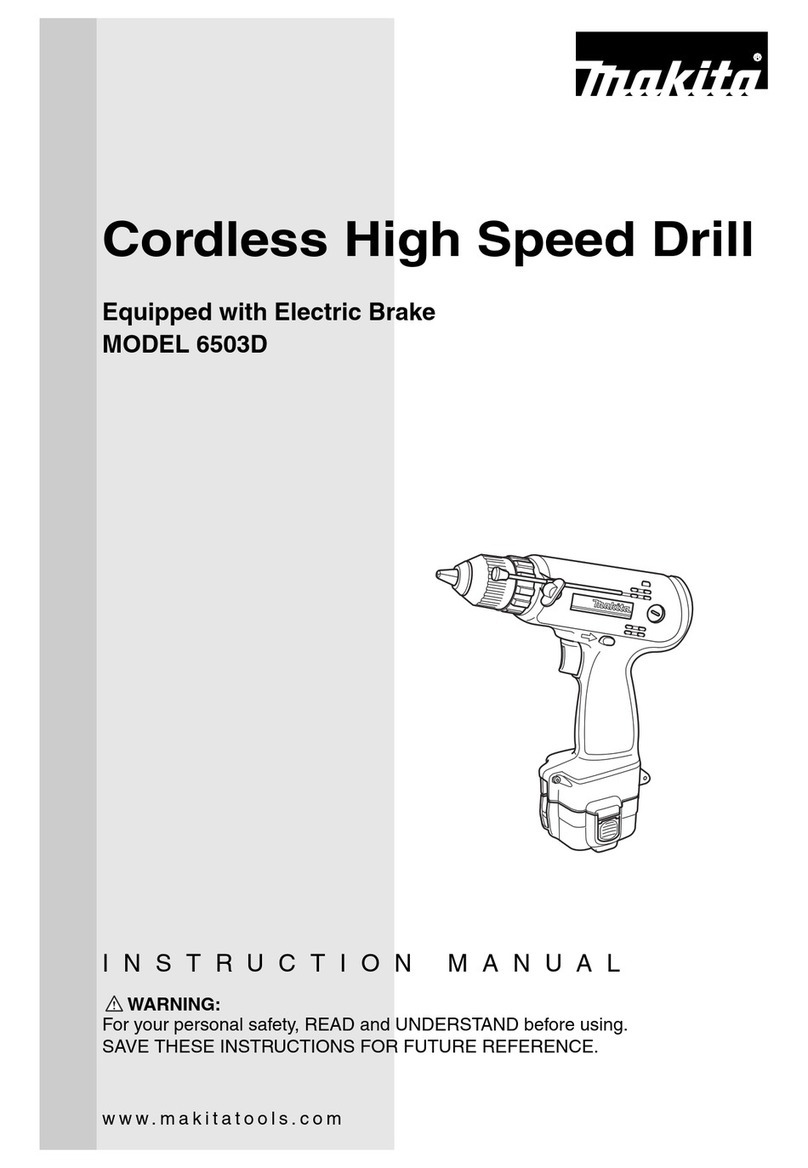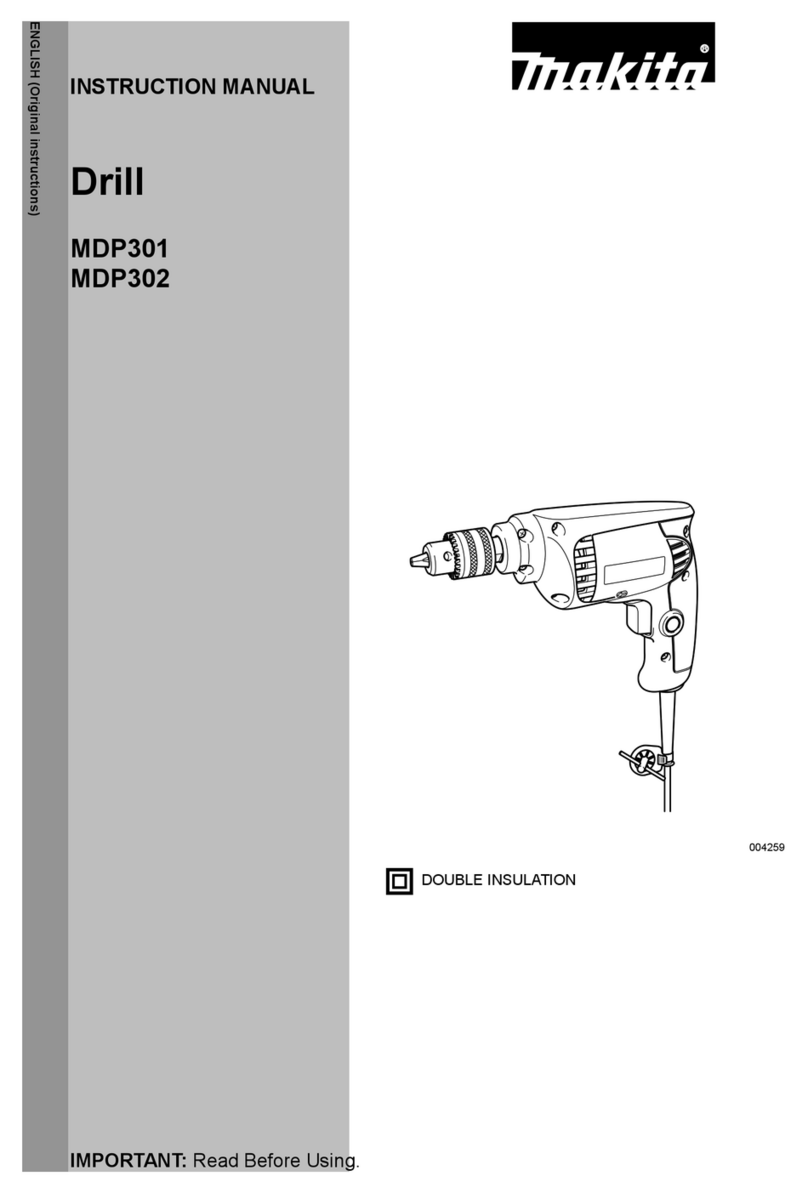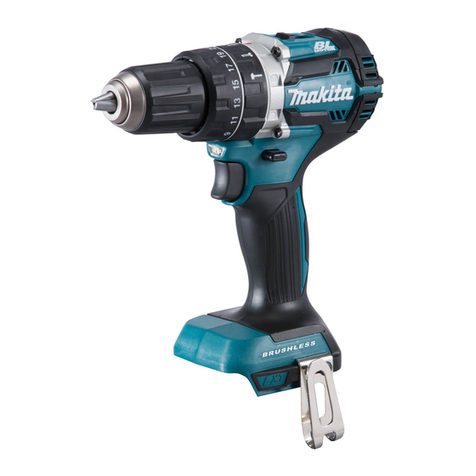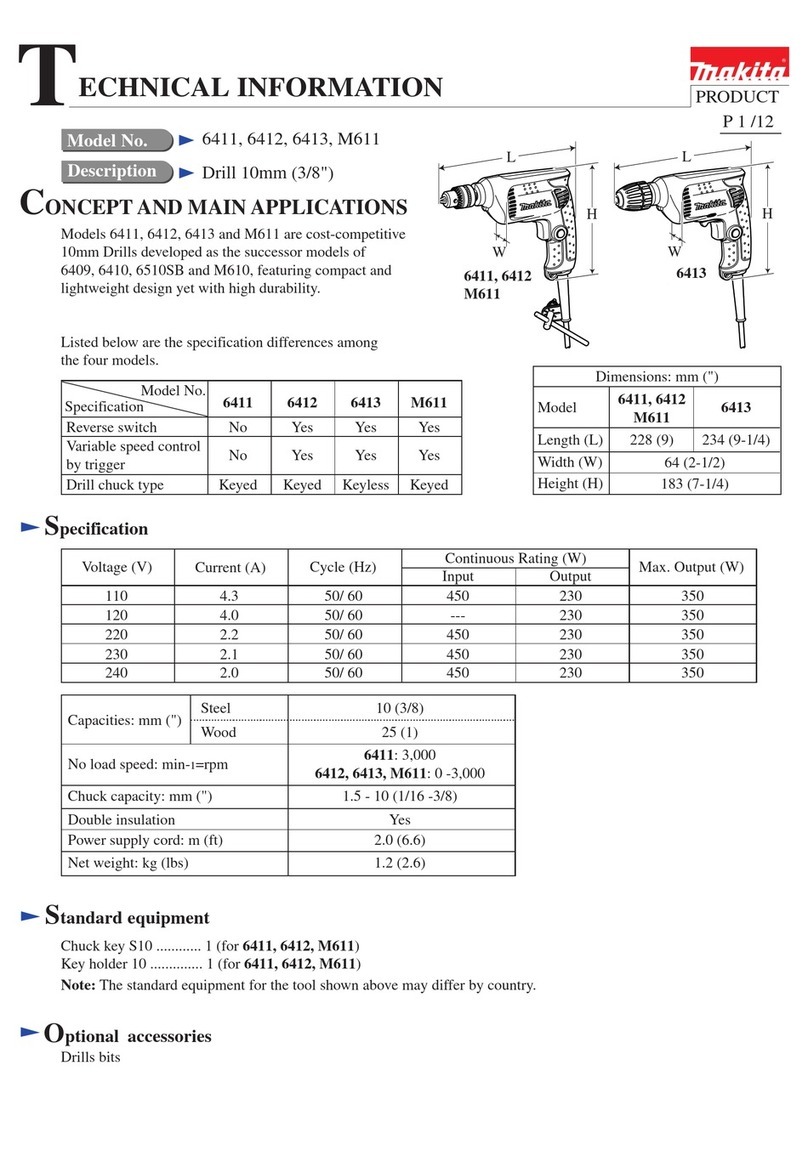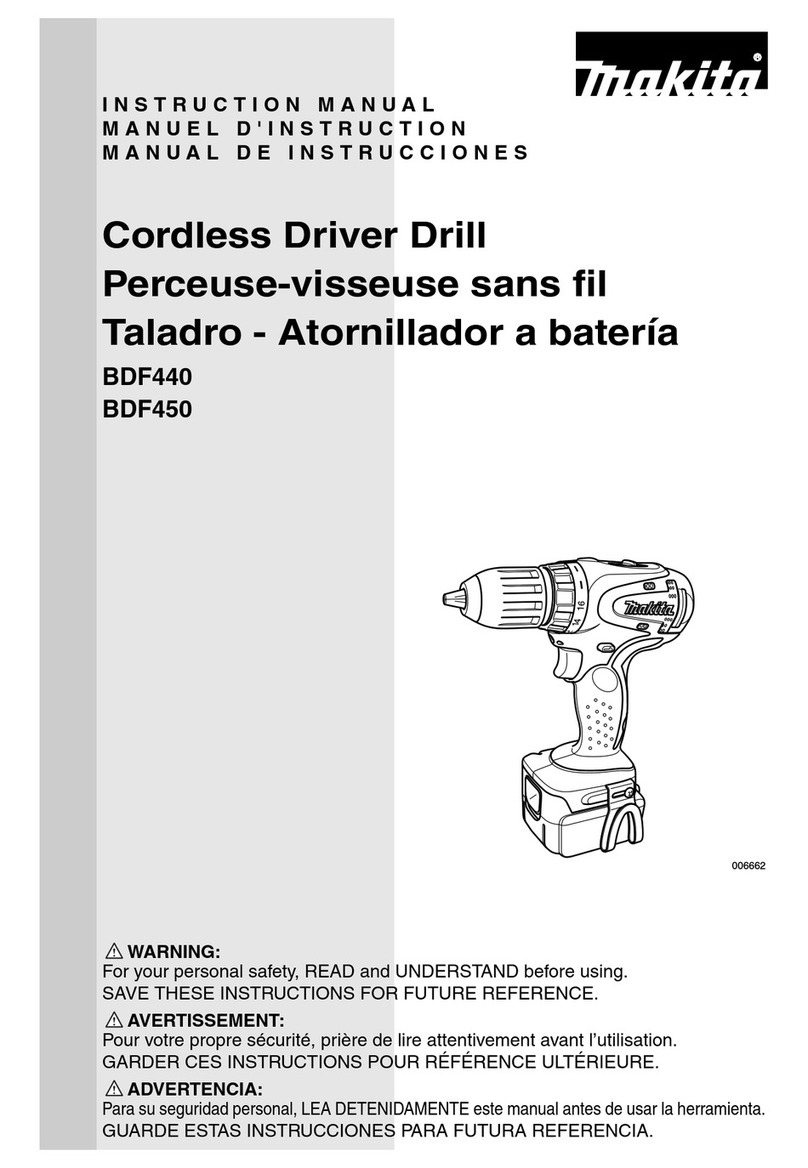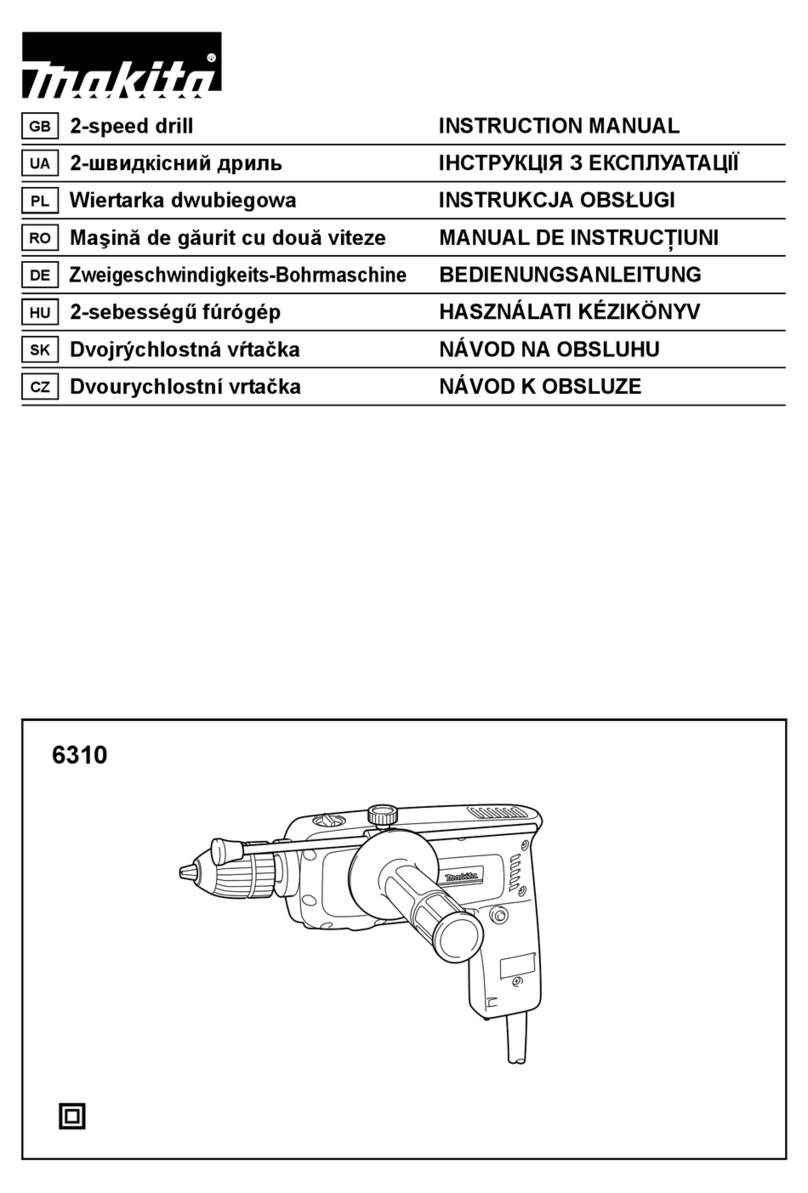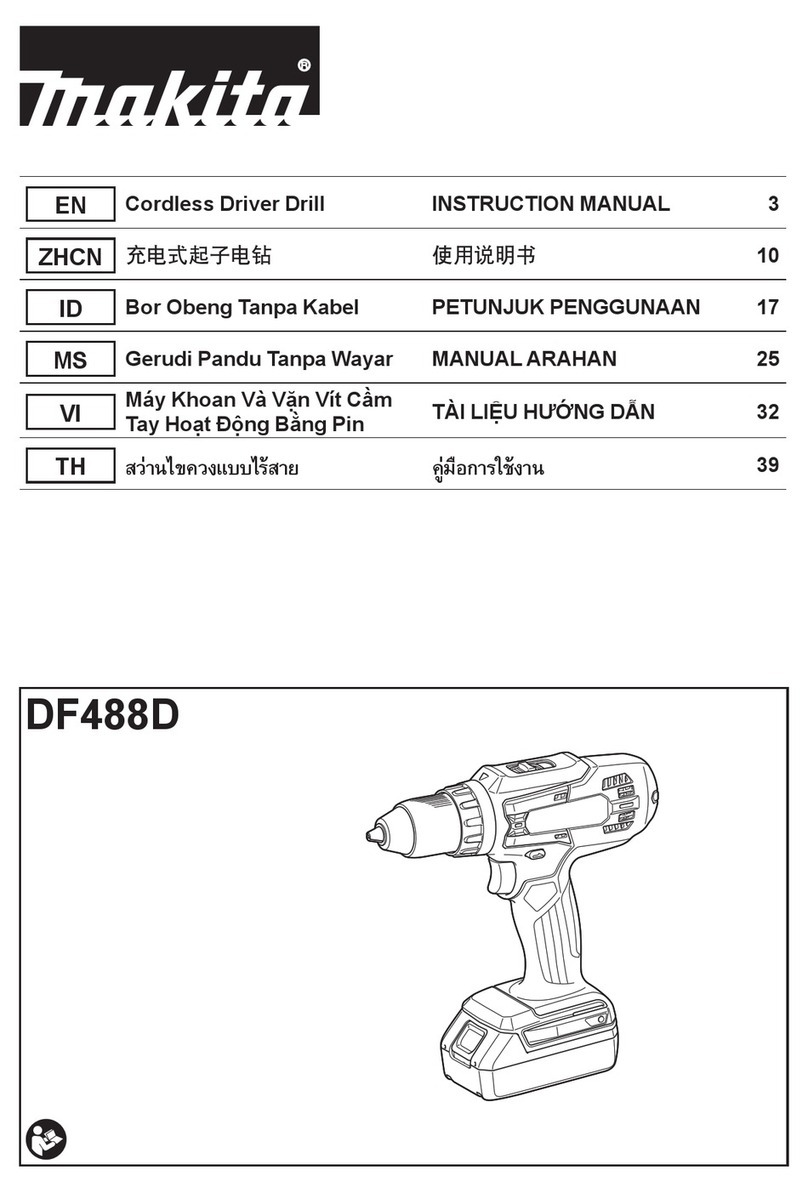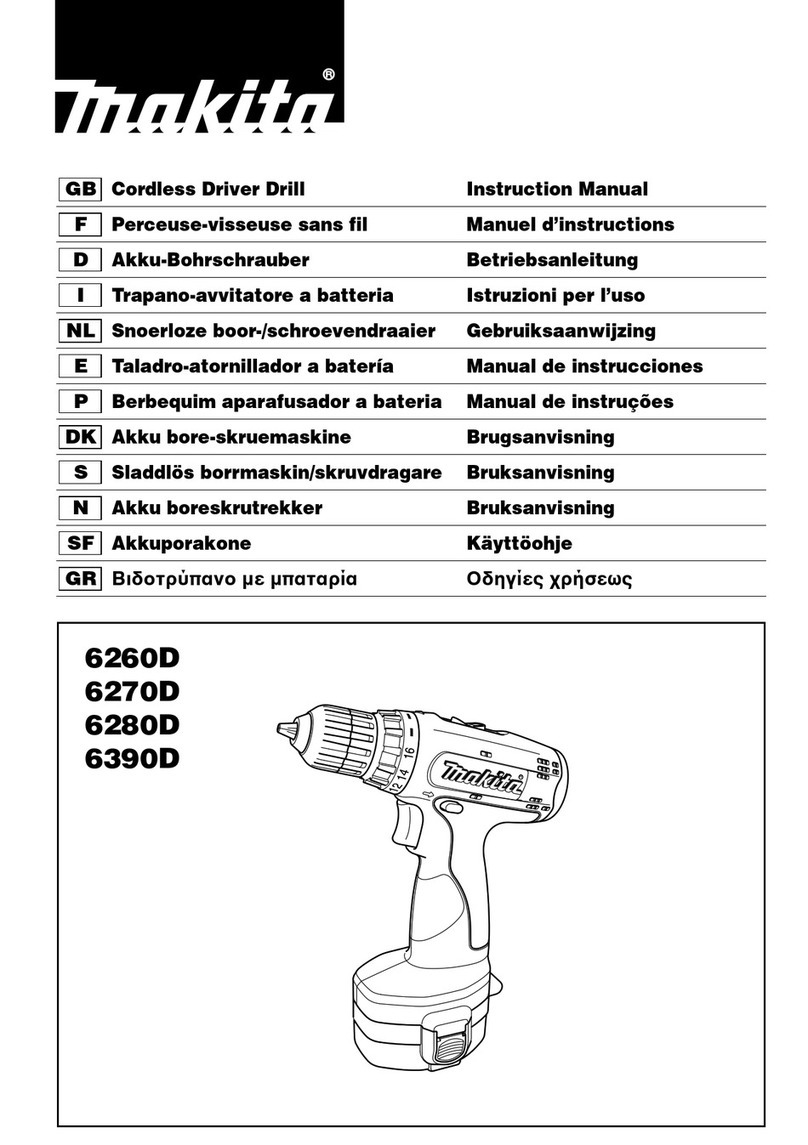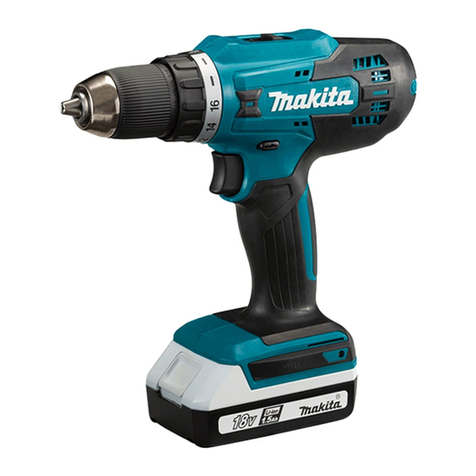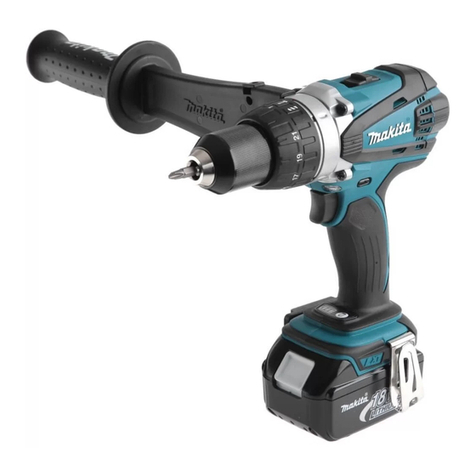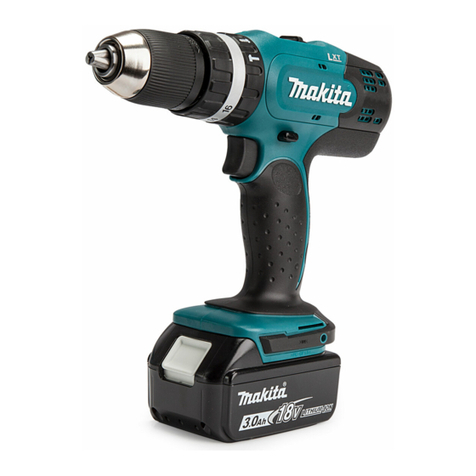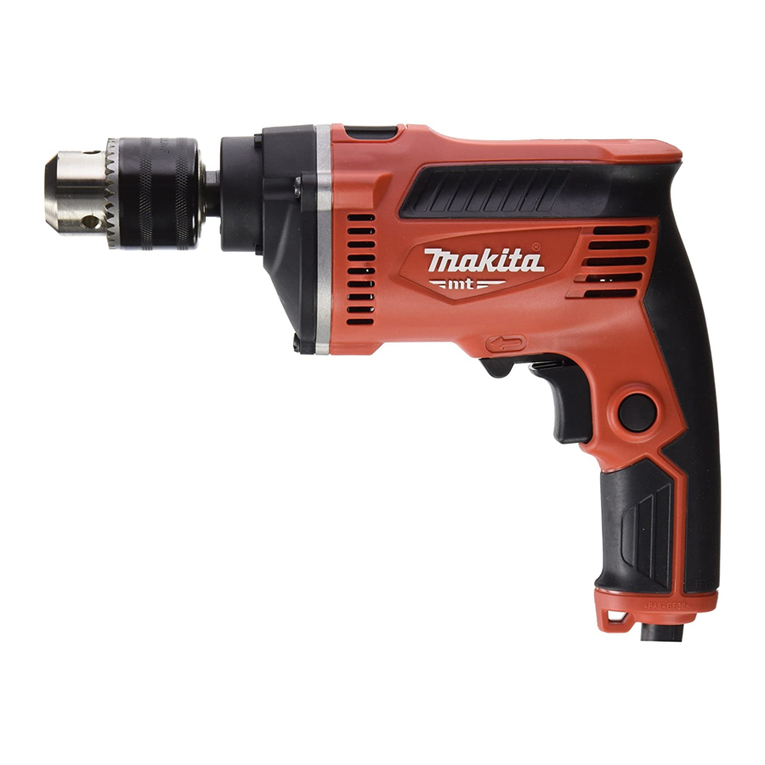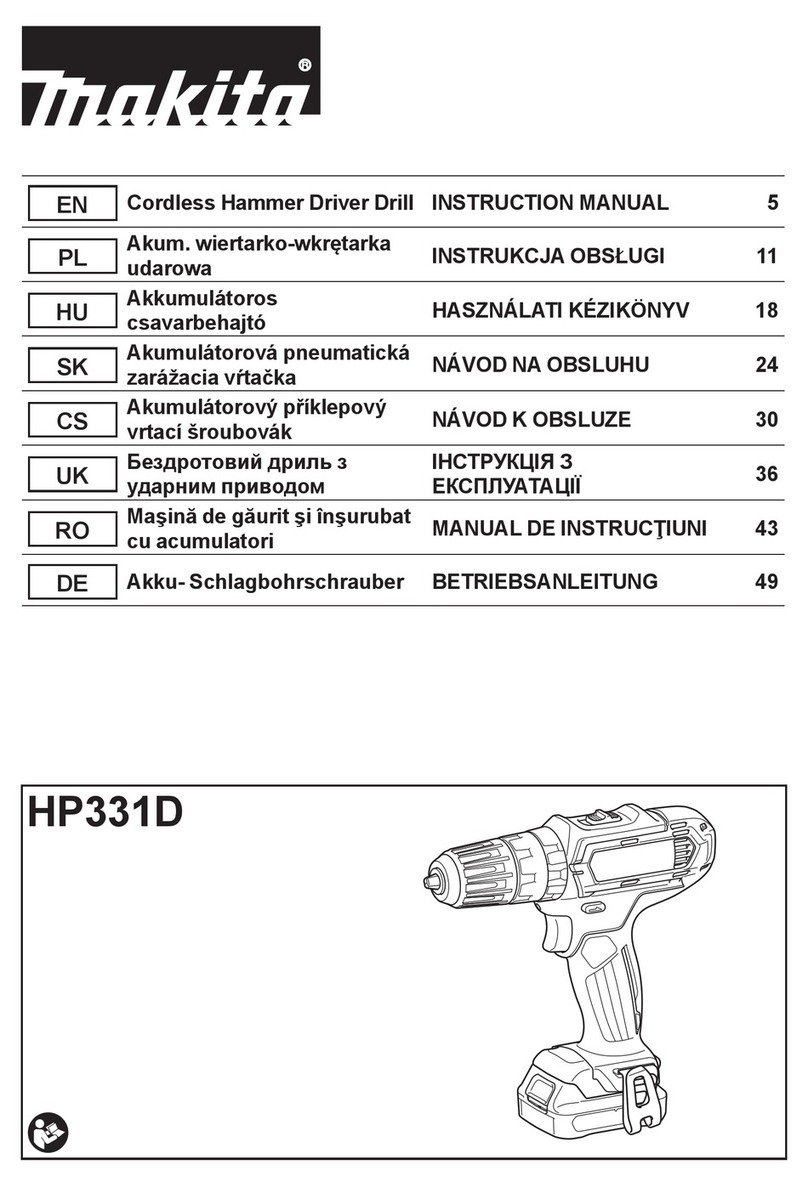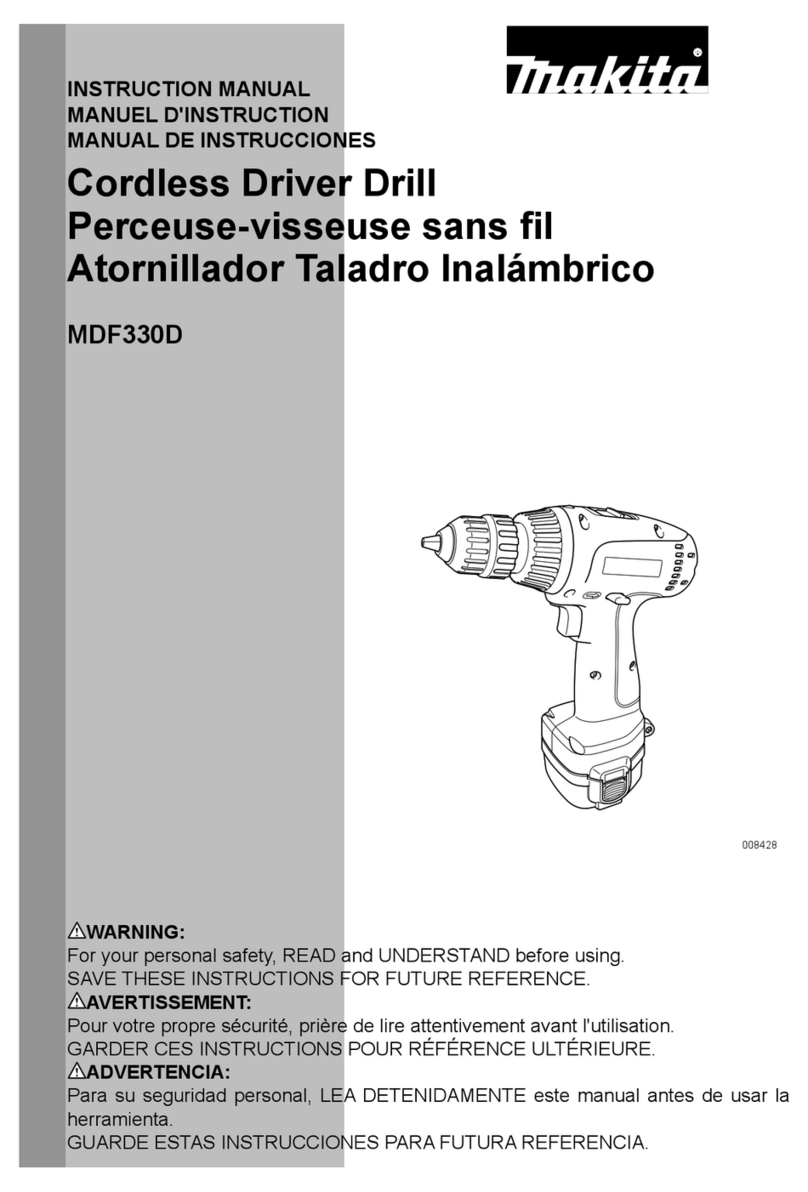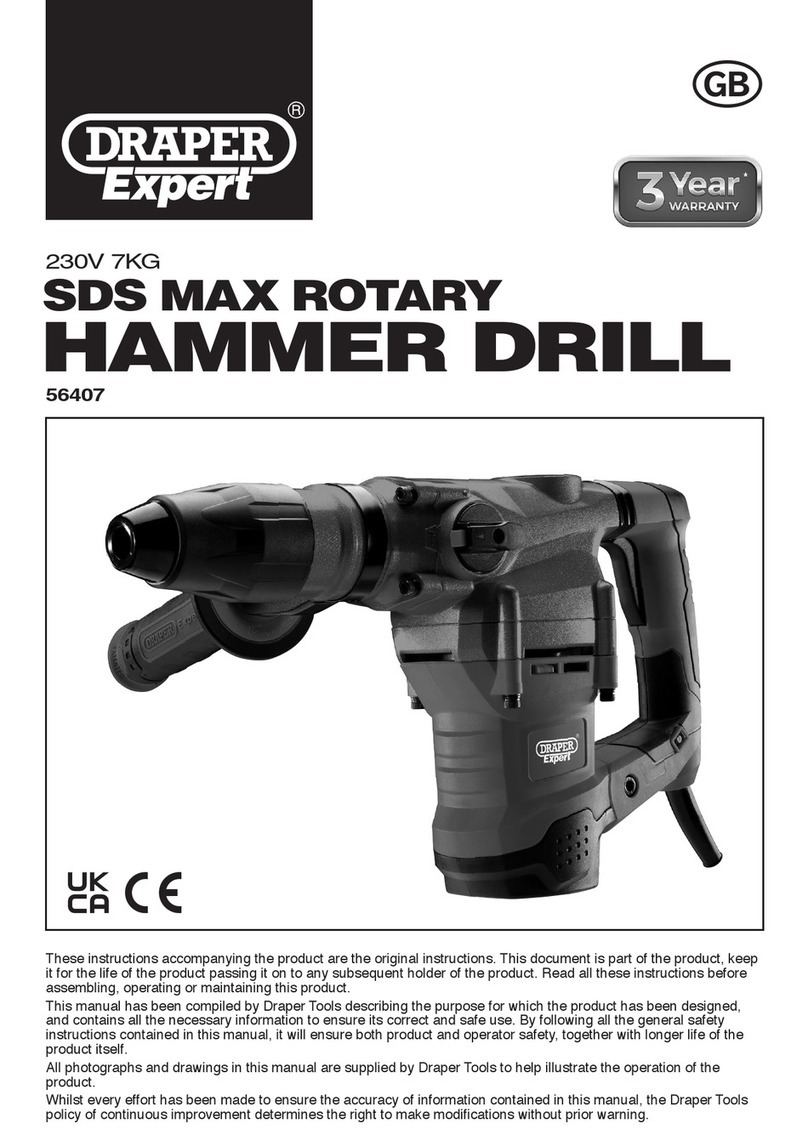25
5. Houd uw handen uit de buurt van draaiende delen.
6. Laat het gereedschap niet ingeschakeld liggen.
Bedien het gereedschap alleen wanneer u het
vasthoudt.
7. Raak het schroef- of boorbit en het werkstuk niet
onmiddellijk na gebruik aan. Zij kunnen bijzonder
heet zijn en brandwonden op uw huid
veroorzaken.
8. Sommige materialen bevatten chemische stoffen
die giftig kunnen zijn. Neem
voorzorgsmaatregelen tegen het inademen van
stof en contact met de huid. Volg de
veiligheidsinstructies van de leverancier van het
materiaal op.
BEWAAR DEZE
VOORSCHRIFTEN
WAARSCHUWING:
VERKEERD GEBRUIK of het niet volgen van de
veiligheidsinstructies in deze gebruiksaanwijzing kan
leiden tot ernstig persoonlijk letsel.
BELANGRIJKE
VEILIGHEIDSINSTRUCTIES VOOR
ACCU’S
1. Alvorens de accu in gebruik te nemen, leest u
eerst alle instructies en
waarschuwingsopschriften op (1) de acculader, (2)
de accu en (3) het apparaat waarin de accu wordt
aangebracht.
2. Haal de accu niet uit elkaar.
3. Als de gebruikstijd aanzienlijk korter is geworden,
stopt u onmiddellijk met het gebruik. Anders kan
dit leiden tot kans op oververhitting, mogelijke
brandwonden en zelfs een explosie.
4. Als de elektrolyt in uw ogen komt, wast u deze uit
met schoon water en raadpleegt u onmiddellijk
een arts. Dit kan leiden tot verlies van
gezichtsvermogen.
5. Sluit de accu niet kort:
(1) Raak de accupolen niet aan met enig geleidend
materiaal.
(2) Bewaar de accu niet op een plaats waar deze in
aanraking kan komen met andere metalen
voorwerpen, zoals spijkers, munten, enz.
(3) Stel de accu niet bloot aan water of regen.
Kortsluiting van de accu kan leiden tot een hoge
stroomsterke, oververhitting, mogelijke
brandwonden en zelfs een defect.
6. Bewaar het gereedschap en de accu niet op
plaatsen waar de temperatuur kan oplopen tot
50 °C of hoger.
7. Werp de accu niet in een vuur, zelfs niet als deze al
ernstig beschadigd of helemaal versleten is. De
accu kan in een vuur exploderen.
8. Wees voorzichtig dat u de accu niet laat vallen of
ergens tegenaan stoot.
BEWAAR DEZE
VOORSCHRIFTEN
Tips voor een lange levensduur van de
accu
1. Laad de accu op voordat deze volledig leeg is.
Wanneer u merkt dat het gereedschap minder
vermogen heeft, stopt u met het gebruik ervan en
laadt u eerst de accu op.
2. Laad nooit een volledig opgeladen accu op. Te
lang opladen verkort de levensduur van de accu.
3. Laad de accu op bij een omgevingstemperatuur
van 10 °C t/m 40 °C. Laat een warme accu eerst
afkoelen voordat u deze oplaadt.
BESCHRIJVING VAN DE
FUNCTIES
LET OP:
• Controleer altijd of het gereedschap is uitgeschakeld
en de accu is verwijderd alvorens de functies van het
gereedschap te controleren of af te stellen.
De accu aanbrengen en verwijderen (zie
afb. 1)
• Schakel het gereedschap altijd uit voordat u de accu
aanbrengt of verwijdert.
• Om de accu te verwijderen verschuift u de knop aan de
zijkant van de accu en trekt u tegelijkertijd de accu uit
het gereedschap.
• Om de accu aan te brengen lijnt u de lip op de accu uit
met de groef in de behuizing en duwt u de accu op zijn
plaats. Steek de accu zo ver mogelijk in het
gereedschap tot u een klikgeluid hoort. Als u het rode
deel aan de bovenkant van de knop kunt zien, is de
accu niet goed aangebracht. Steek de accu zo ver
mogelijk erin tot het rode deel niet meer zichtbaar is.
Als u dit niet doet, kan de accu per ongeluk uit het
gereedschap vallen en u of anderen in uw omgeving
verwonden.
• Oefen geen grote kracht uit bij het aanbrengen van de
accu. Als de accu niet gemakkelijk in het gereedschap
kan worden gestoken, wordt deze niet goed
aangebracht.
Aan/uit-schakelaar (zie afb. 2)
LET OP:
• Controleer altijd, voordat u de accu in het gereedschap
steekt, of de aan/uit-schakelaar op de juiste manier
schakelt en weer terugkeert naar de uit-stand nadat
deze is losgelaten.
Om het gereedschap in te schakelen, knijpt u gewoon de
aan/uit-schakelaar in. De draaisnelheid van het
gereedschap neemt toe naarmate u meer druk uitoefent
op de aan/uit-schakelaar. Laat de aan/uit-schakelaar los
om het gereedschap te stoppen
